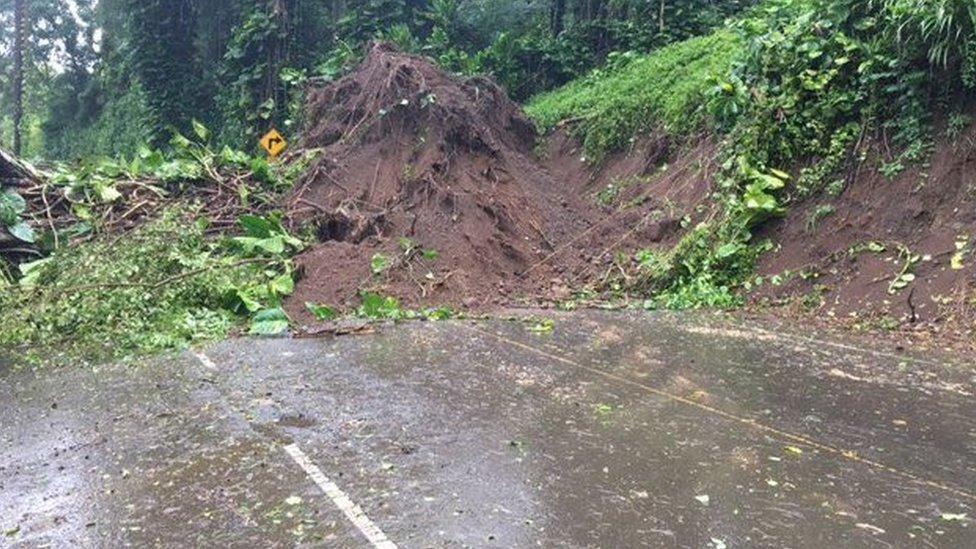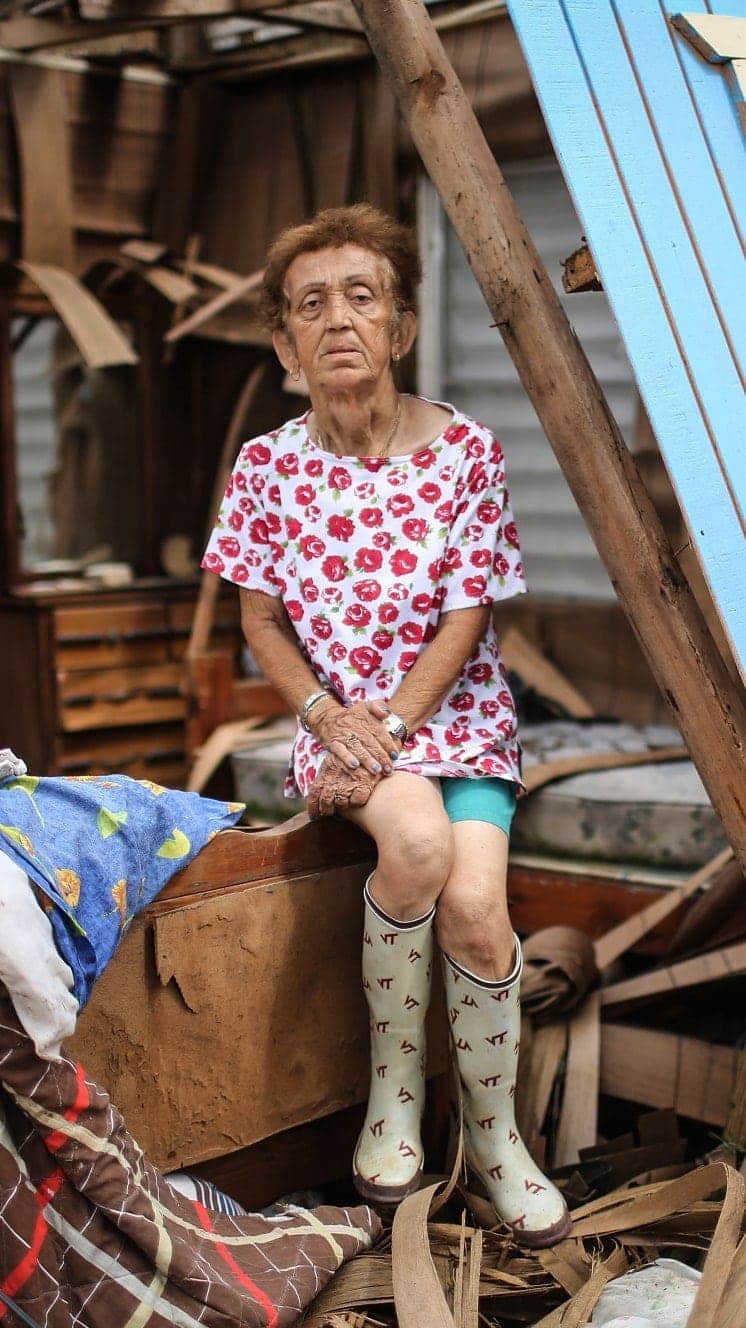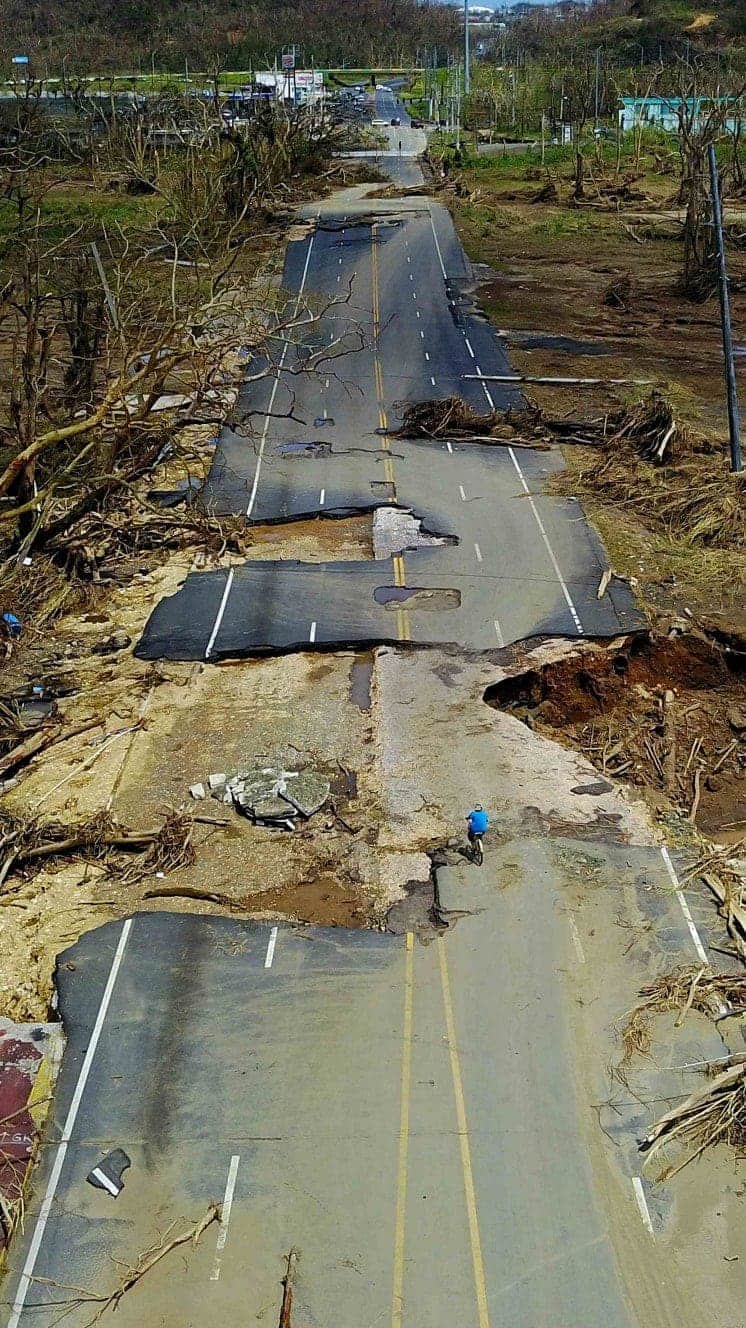Hawaii storm: Hurricane Lane downgraded to tropical storm
- Published

Hurricane Lane has been downgraded to a tropical storm as it churns towards Hawaii, but is still causing flash flooding and landslides.
Schools and offices were closed as residents took shelter from the storm, which pummelled the US state with strong winds and torrential rain.
But Hawaii looks was spared its first direct hit by a major storm in 25 years.
President Donald Trump earlier declared a state of emergency for the state.
The White House said federal authorities were on standby to provide support and supplies to local and state emergency response efforts.
The Central Pacific Hurricane Center said early on Friday afternoon Hurricane Lane was "weakening quickly", with sustained winds of 85 mph (137km/h).
By 17:00 local time (03:00 GMT Saturday), the sustained wind speed had dropped to 70 mph, although "more flooding and damaging winds" were expected on parts of the islands.

Hawaii residents carry dogs to safety as Hurricane Lane has prompts evacuations throughout the island.
Weather Service forecaster Leigh Anne Eaton said some parts of Big Island had already seen almost 3ft (90cm) or rain.
Meanwhile, the National Weather Service said there had been "catastrophic flooding" and wind gusts reaching 67mph (108 kmph).
Federal Emergency Management Agency (Fema) chief Brock Long took to Twitter to warn those in Hawaii to "heed the warnings of local officials and stay aware of your surroundings" until the danger had passed.

An image from the Hawaiian Department of Transportation posted a photo of a landslide blocking a highway on the Big Island/
Amidst concerns of the approaching storm, emergency personnel responded to "rapidly spreading" brush fire in western Maui.
The fire has prompted highway closures, power outages and precautionary evacuations.
Lane was also forecast to cause dangerous surf heights of up to 25ft (7.6m) in Maui and Oahu.
Officials warned of "significant beach erosion" and waves hitting coastal roadways.

Meanwhile, United Airlines said it had cancelled all Friday flights to and from the main airports on Maui, the second-largest island.
How are residents coping?
Roads were closed due to the landslides and images of cars attempting to tackle the deep waters were posted on social media.
Allow X content?
This article contains content provided by X. We ask for your permission before anything is loaded, as they may be using cookies and other technologies. You may want to read X’s cookie policy, external and privacy policy, external before accepting. To view this content choose ‘accept and continue’.

Residents in other areas of the Big Island, such as Hilo, were caught out by the flash floods with several vehicles becoming trapped.
A member of staff at a local service station in Haleiwa, on the north shore of Oahu island, told AFP news agency that motorists had been "constantly filling" their vehicles.
"Everybody is in a panic mode right now, everyone is filling up gas, gas cans, propane cans," he said.
According to the Red Cross, more than 1,500 people are in shelters, Hawaii News Now reported, external.
Tomasz Schafernaker has the latest forecast for Hurricane Lane
Hawaii Governor David Ige urged residents to set aside supplies of water, food and medicines as a precaution and to avoid driving if possible.
Dozens of evacuation centres were also set up throughout the day as Mr Trump urged Hawaiians to hunker down and prepare for the worst.

Does Hawaii see many hurricanes?
According to NWS, only four named storms have made landfall in Hawaii since 1959 - and only two of those storms were hurricanes.
Hawaii generally sees about one storm strong enough to earn a name pass within 60 miles of the islands every four years.
Earlier this month, Hurricane Hector, a category four storm, also passed by the islands, though it did not come as close as Lane.
The state has also seen serious volcanic eruptions this summer, with lava and ash spewing from the Kilauea volcano on the Big Island since May.
The BBC's James Cook had a lucky escape after a tree hit him as he delivered a radio report


- Published23 August 2018

- Published7 September 2017

- Published21 September 2017






















